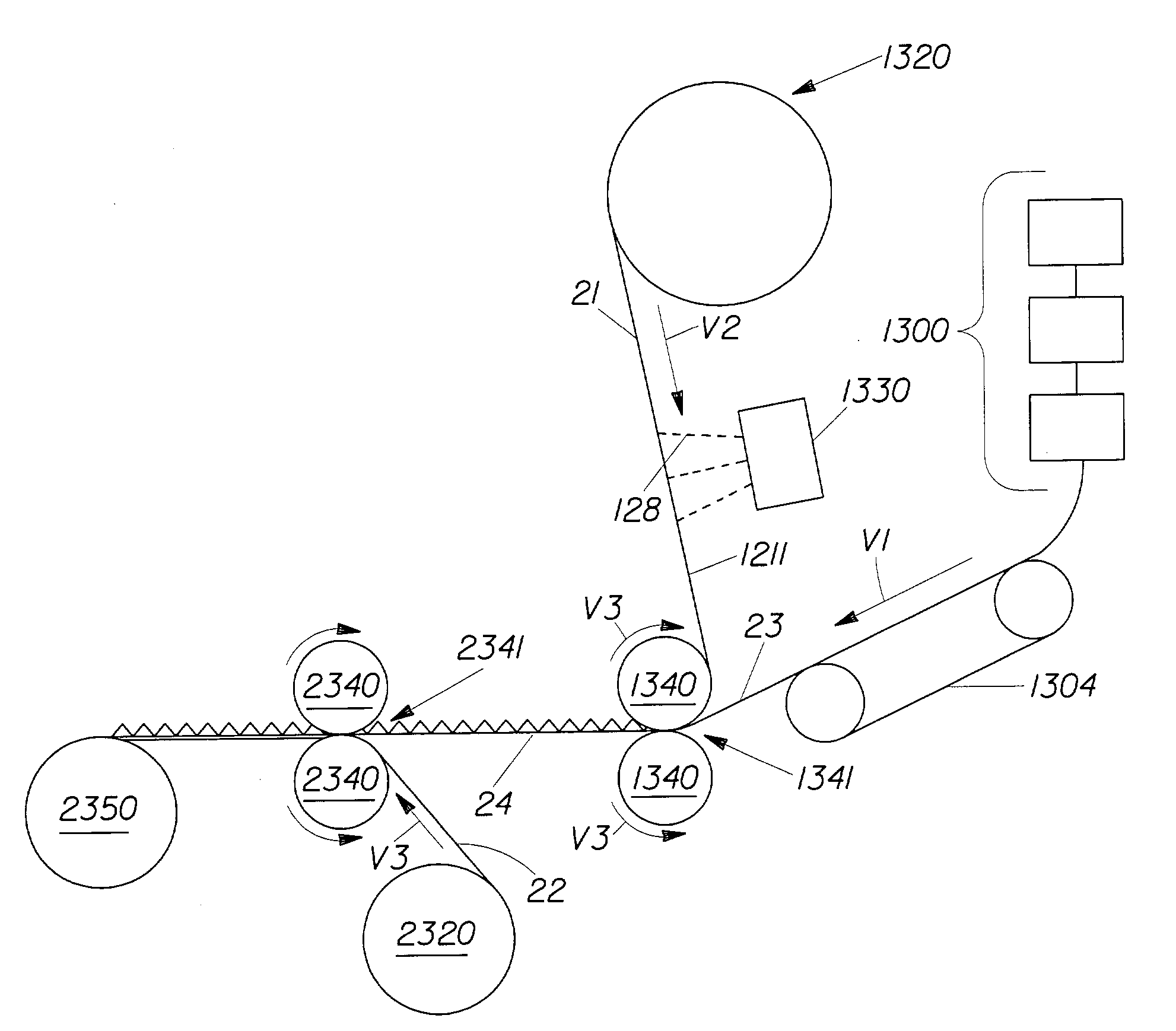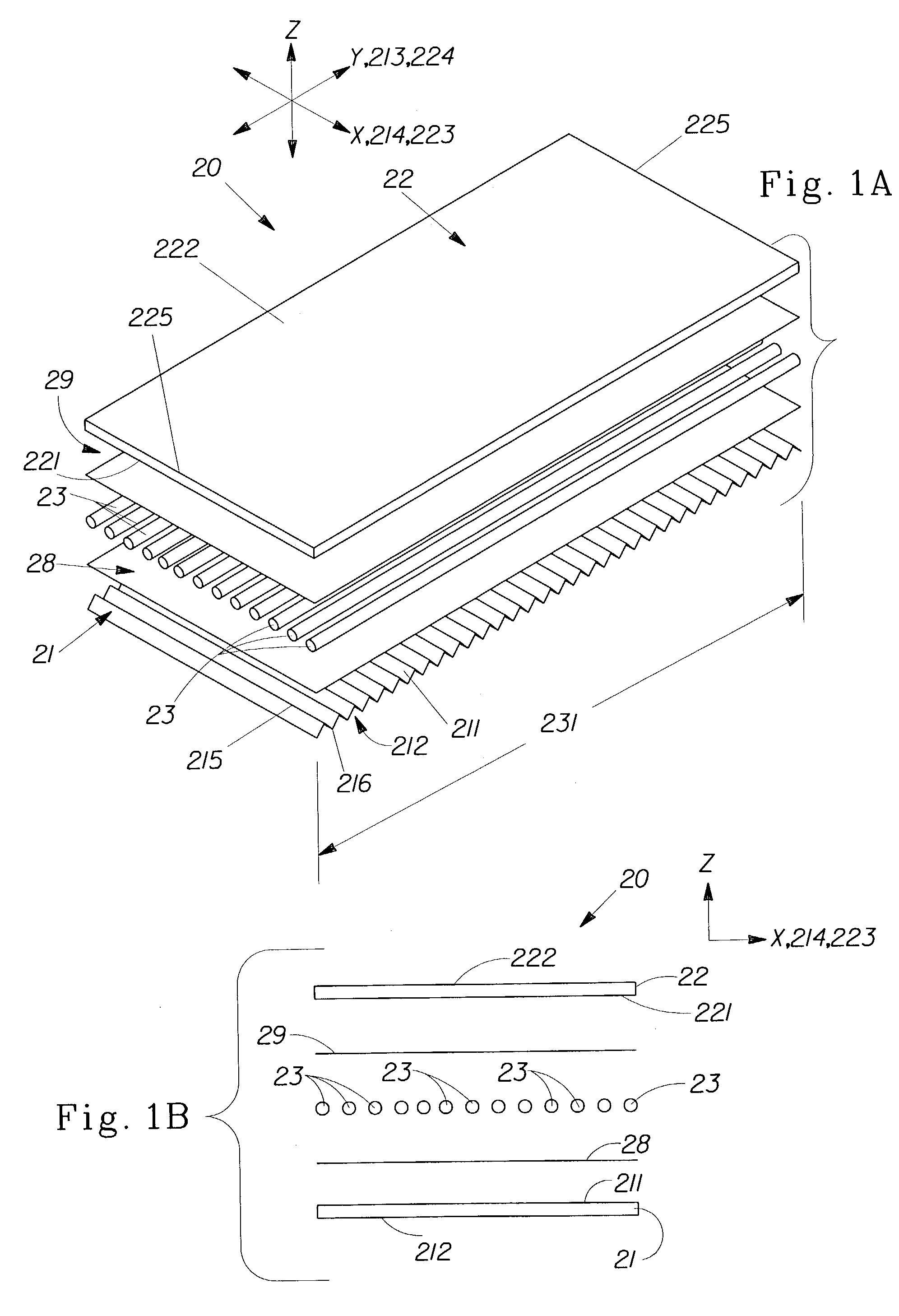Elastomeric nonwoven laminates and process for producing same
a non-woven, elastomeric technology, applied in the direction of weaving, bandages, other domestic articles, etc., can solve the problems of exposed adhesive between the strands, exposed adhesive can be problematic for downstream conversion operations, exposed elastic strands fail to exhibit the softness and comfort desired by consumers
- Summary
- Abstract
- Description
- Claims
- Application Information
AI Technical Summary
Benefits of technology
Problems solved by technology
Method used
Image
Examples
Embodiment Construction
[0017]The method, material, and the apparatus of the present invention are designed to provide a more cost effective and / or consumer desirable elastomeric nonwoven laminate suitable for use in a variety of articles including a disposable fluid-handling article. The elastomeric nonwoven laminate comprises a nonwoven / elastic / nonwoven sandwich composed from at least one layer of corrugated nonwoven, a layer of elastic strands and a flat layer of nonwoven. When the laminate is mechanically activated, the flat layer of nonwoven is strained (plastically deformed) in the cross direction, while the elastic strands and the corrugated nonwoven are strained, but only to the extent that no plastic deformation occurs.
Definitions
[0018]The following terminology is used herein consistent with the plain meaning of the terms with further details provided in the present specification.
[0019]The term “activating” or activation refers to the process of making a nonwoven, or an elastic and nonwoven lamina...
PUM
| Property | Measurement | Unit |
|---|---|---|
| Fraction | aaaaa | aaaaa |
| Fraction | aaaaa | aaaaa |
| Fraction | aaaaa | aaaaa |
Abstract
Description
Claims
Application Information
 Login to View More
Login to View More - R&D
- Intellectual Property
- Life Sciences
- Materials
- Tech Scout
- Unparalleled Data Quality
- Higher Quality Content
- 60% Fewer Hallucinations
Browse by: Latest US Patents, China's latest patents, Technical Efficacy Thesaurus, Application Domain, Technology Topic, Popular Technical Reports.
© 2025 PatSnap. All rights reserved.Legal|Privacy policy|Modern Slavery Act Transparency Statement|Sitemap|About US| Contact US: help@patsnap.com



